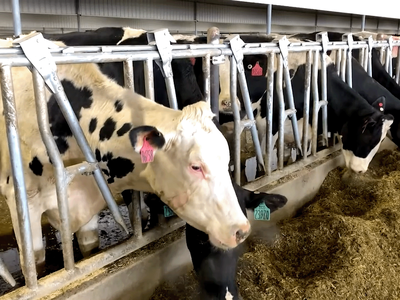Farm Safety
There's no question that days on the fa rm can get extremely busy. Safety and productivity on the farm go hand-in-handand according to the Bobcat Company, when it comes to operating compact equipment, safety should be at the forefront of every stakeholder's mind, including business owners, managers and the operators themselves. Those who know and understand how to safely use equipment have the ability to work faster and more efficiently, leading to better overall performance and profitability. Knowing how to properly use compact equipment can also help reduce the risk of injury to operators or others on the jobsite.Building a safety mindset requires a shared responsibility at all levels, proper training, daily integration, continuous improvement and positive reinforcement. A safety culture starts with management and operational staff members who treat safety and health as an investment, not a cost, and who value as well as demonstrate model behaviors. Also, operators who know how to properly operate their equipment and follow manufacturers' recommendations are more likely to operate more safely and efficiently.
"Educating your operators on machine capabilities and safe operation is paramount to minimizing risks on the jobsite," says Shawn Warkenthien, director of product safety for Bobcat Company. "The amount of money you invest in safety education and training can reap dividends in increased performance and profitability, not to mention the decreased negative consequences of a careless work environment — injuries, insurance claims, lost revenue or even worse."
Safety is always being refined and continuously improved upon, so dedicating time and resources will help strengthen areas as well as define strategies that can positively impact safety performance. Positive reinforcement — by celebrating and acknowledging efforts — is another key aspect that goes hand-in-hand with continuous improvement.
Knowing how a machine works, realizing a machine's capabilities and limitations, and exercising appropriate behavior inside and around the machine can help minimize the risk of accidents.
Some universal guidelines that can be used for all compact machines include:
• Consult the operation and maintenance manual before operating any type of compact equipment.
• Follow instructions on machine safety signs to avoid situations that can cause serious injuries or even death.
• Wear tight-fitting clothing that cannot get caught on working components or controls inside and outside of the machine.
• Always face the machine when getting in, and grab handles and use steps that are provided for a three-point contact.
• Fasten the seatbelt.
• Pay close attention to all warning lights and gauges.
• Never attempt to start the engine or operate the controls from outside the machine.
• Look to the rear first before backing up and check each side before swinging or turning the machine.
• Run at a low speed until the operator is comfortable with using the machine.
• Never allow riders on the machine.
• Keep all body parts inside the machine while it is running.
• Be aware of overhead or underground power lines or obstacles.
• Make sure proper ventilation is provided if working in an enclosed area or building.
• Move slowly uphill or downhill, with the heaviest part of the machine uphill. (When loaders or handlers are empty, the heaviest part might be the rear of the machine.)
• Avoid sudden stops or turns; steep slopes or drop-offs; rocks; culverts and stumps.
• Stop the machine on level ground when finished on a jobsite. Always lower the booms, lift arms, buckets and attachments before exiting the machine.
• Engage the parking brake and stop the engine before leaving the unit with the three-point exit strategy.
An owners' manual is the ideal source for equipment information, but manufacturers like Bobcat Company offer operator training kits and safety videos, in both English and Spanish, designed to improve safety and productivity for their machines. Bobcat operator training kits can be obtained by contacting your local Bobcat dealer or visiting Bobcat.com/train.
Incorporating safety on the jobsite can help employees experience not only increased health and safety, but also increased pride in their work.
"According to research done by the Occupational Safety & Health Administration (OSHA), a commitment to a safety culture almost always leads to better employee safety and health, less hazardous working conditions, lower workers' compensation and other insurance costs, improved productivity and efficiency, enhanced employee morale and reduced turnover," Warkenthien says. "Visible ownership/management commitment to safety also facilitates more trusting relationships between management and employees."
Customers also tend to notice operator safety as well. Being safe presents a favorable impression that can go a long way toward promoting a business. Building and maintaining a safety culture is something all managers and operators should strive for and is a commitment well worth making.


















